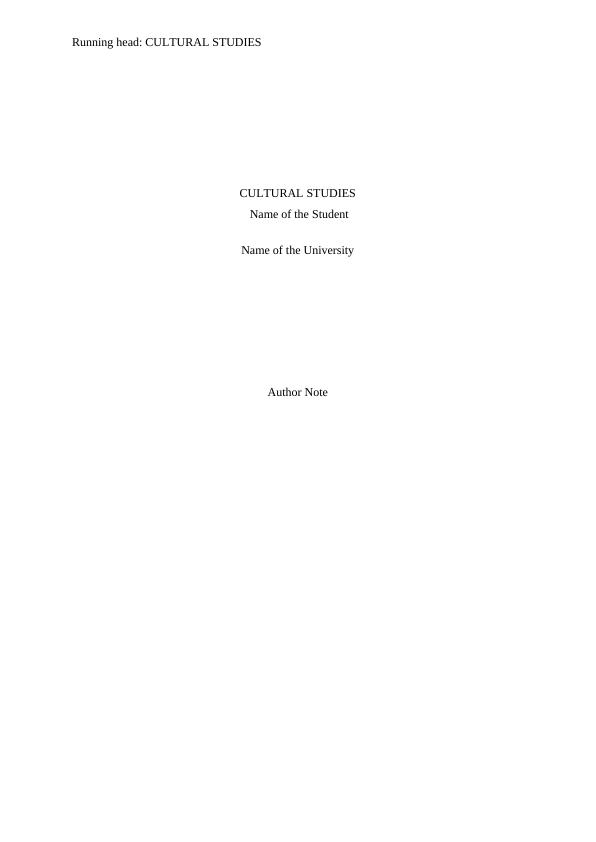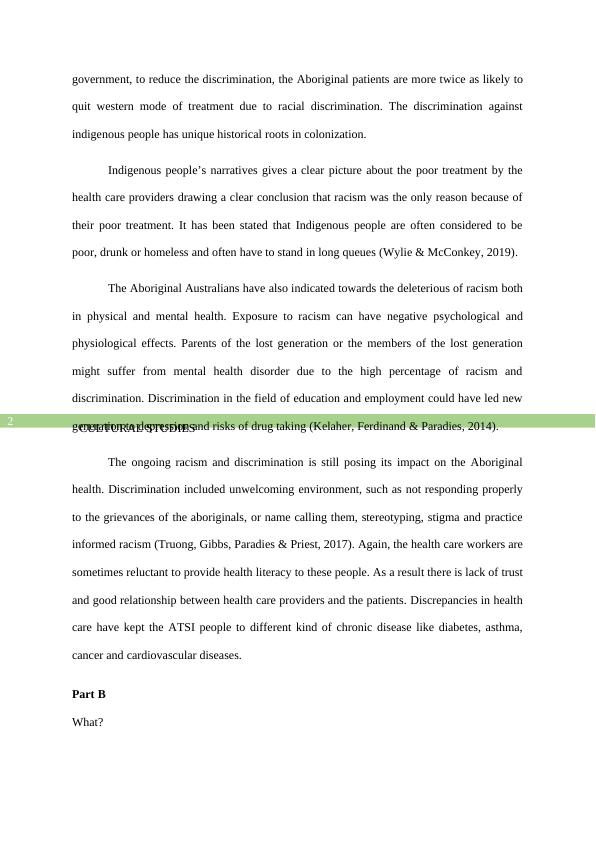Assignment on Cultural Studies
Write a 1200-word reflective essay using The What? So What? What next? model to examine Aboriginal social and historical contexts as a case study for how a consideration of context is useful in understanding contemporary health conditions.
8 Pages1926 Words14 Views
Added on 2022-08-19
Assignment on Cultural Studies
Write a 1200-word reflective essay using The What? So What? What next? model to examine Aboriginal social and historical contexts as a case study for how a consideration of context is useful in understanding contemporary health conditions.
Added on 2022-08-19
ShareRelated Documents
End of preview
Want to access all the pages? Upload your documents or become a member.
Nursing Assignment on Impact of Colonization on Aboriginal People
|6
|1226
|209
Report on Current Issues in Professional Practice
|13
|3542
|100
Australian Indigenous Contexts & Education
|8
|2004
|28
Health Services for the ATSI and the Anglo-Australian Communities
|11
|2905
|165
Australian Healthcare System: Historical and Political Influences and RN Role in Nursing
|10
|2476
|374
Aboriginal and Torres Strait Islander Health: Social, Political, Economic and Cultural Factors
|6
|1246
|346



